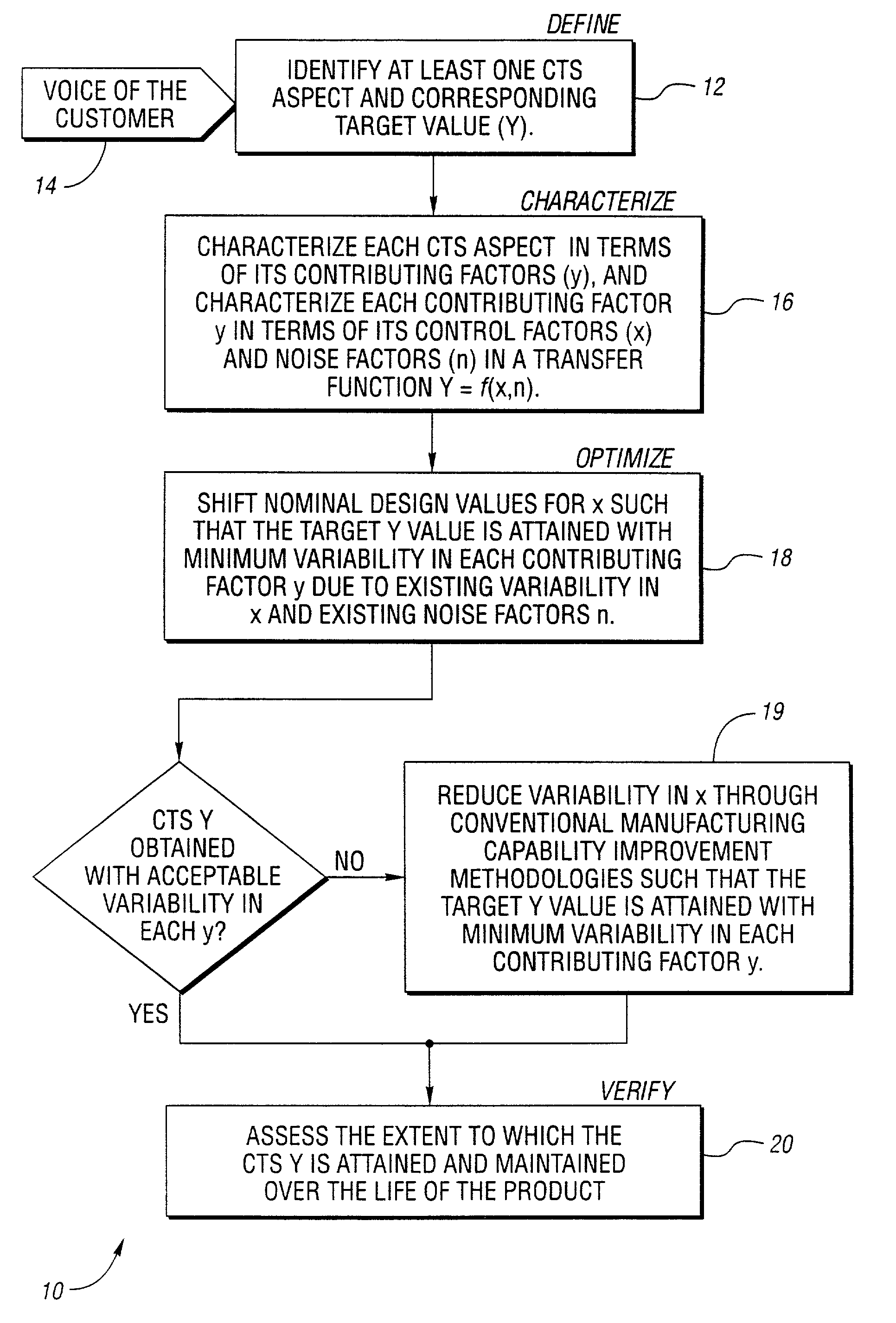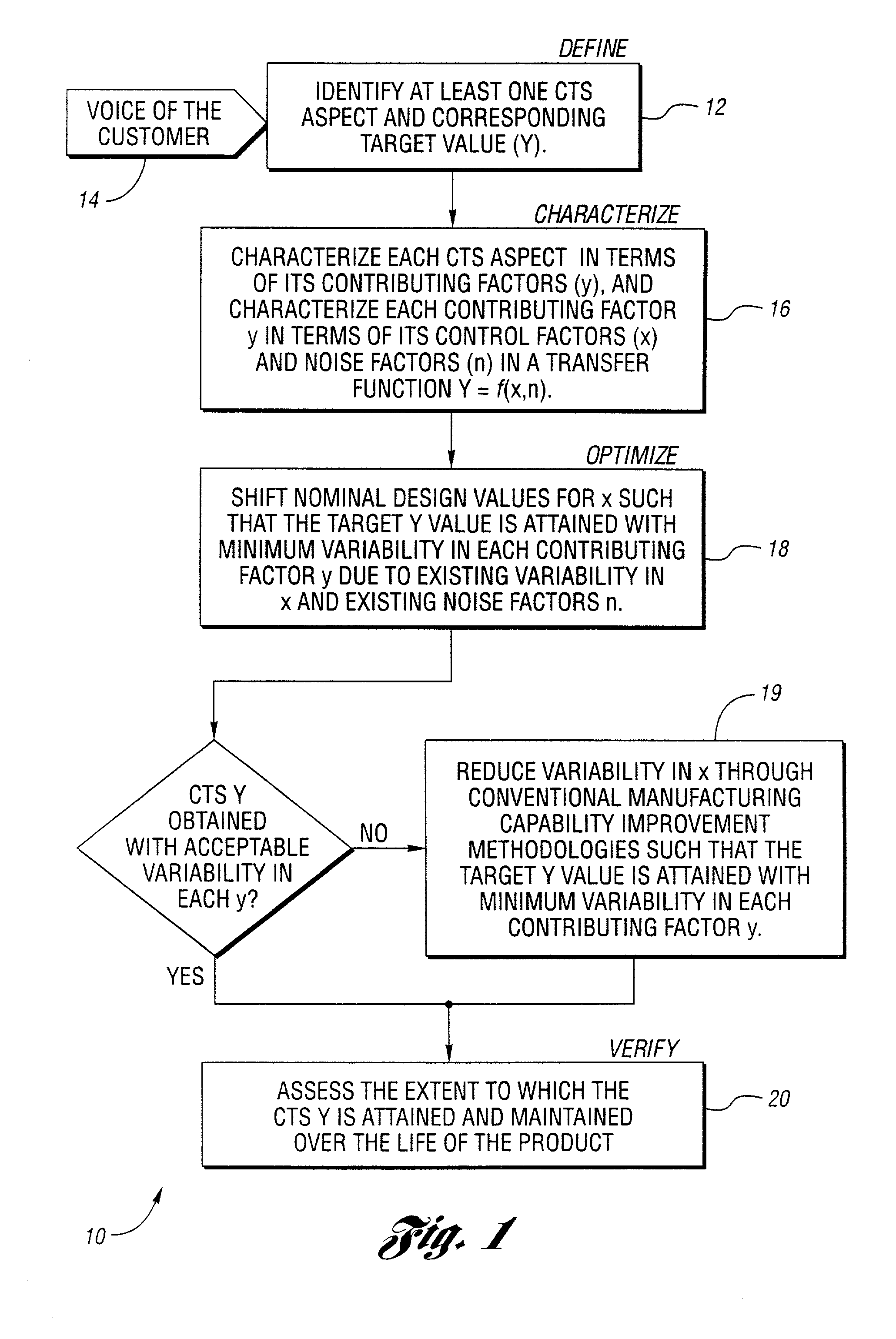Method and system for product optimization
- Summary
- Abstract
- Description
- Claims
- Application Information
AI Technical Summary
Benefits of technology
Problems solved by technology
Method used
Image
Examples
Embodiment Construction
is divided into four principal sections, each corresponding to a separate aspect of the present invention (e.g., Define, Characterize, Optimize and Verify). Notably, the present invention is described in the context of the automotive industry. Such illustration, explanation and application of the present invention, however, is not so limited in practice. The objectives, advantages and means provided in accord with the present invention may be applied to a myriad of products, processes and other circumstances.
Define
[0057] The primary objectives of the Define aspect of the present invention are twofold: to identify and assess the "voice of the customer" base for a given product (i.e., to understand the customer satisfaction, needs, wants and quality history for the product) and, based on the voice of the customer base, to identify CTS aspects of the product including the associated functional targets Y for each CTS aspect.
[0058] FIG. 2 is a block flow diagram illustrating an overview ...
PUM
 Login to View More
Login to View More Abstract
Description
Claims
Application Information
 Login to View More
Login to View More - R&D
- Intellectual Property
- Life Sciences
- Materials
- Tech Scout
- Unparalleled Data Quality
- Higher Quality Content
- 60% Fewer Hallucinations
Browse by: Latest US Patents, China's latest patents, Technical Efficacy Thesaurus, Application Domain, Technology Topic, Popular Technical Reports.
© 2025 PatSnap. All rights reserved.Legal|Privacy policy|Modern Slavery Act Transparency Statement|Sitemap|About US| Contact US: help@patsnap.com



